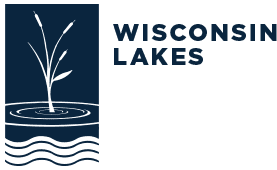Joint Press Release: Urgent Action Needed to Stop AIS Spread via Wake Boat Ballast
Wisconsin Lakes and the Last Wilderness Alliance are calling for urgent state action to halt the spread of Aquatic Invasive Species (AIS) via the ballast systems found in wake boats.
AIS management already costs MILLIONS of dollars annually in Wisconsin. Evidence shows that wake boats contribute to this problem by transferring invasive species between lakes.
The Problem with Ballast Systems
Studies confirm that ballast systems, which are filled with lake water to weigh down wake boats to create surfable waves, retain water and invasive species::
A University of Wisconsin study by Campbell found that, on average, wake boat ballast systems contained 8 gallons of residual lake water after being removed from a lake. Some boats held over 22 gallons.1
This residual water was found to contain AIS, including zebra mussel larvae and zooplankton. Spiny Water Flea (a zooplankton) has been found in 24 Wisconsin lakes, and no effective eradication exists.
A University of Minnesota comparison of eight boat compartments showed that ballasted boats contained the most zebra mussel larvae. Median data indicated 296 veligers (larvae) were found in ballast systems.2
Transferring a ballasted boat from an infested lake to a new lake carries a 7 in 10 chance of transferring 100 mussel larvae.
The Common-Sense Solution: Hot Water Flushing
Fortunately, a common-sense, common-ground solution to this problem is Hot Water Flushing.
Some boat manufacturers, such as Malibu3, recommend flushing the ballast system with hot water to prevent the spread of invasive species like quagga and zebra mussels.
Flushing the system with hot water at 120 degrees or greater kills quagga, zebra mussel juveniles, larvae, and spiny water fleas in seconds.
This procedure not only helps prevent the spread of AIS but also allows boaters to comply with existing state and federal laws prohibiting the spread of quagga and zebra mussels.
Proposed Regulation
The boating industry and lake advocates agree on this hot water flushing solution, representing a point of “common ground.” The decontamination protocol and equipment already exist.
All recreational boats with ballast systems must be flushed with hot water (120 degrees or greater) before being launched into a different Wisconsin lake.
All flushing certifications would be required annually, with a new certificate required at the start of each boating season. This annual requirement would also prevent ballast tank antifreeze4 from being discharged into a lake after winter storage.
If a boat is used on only one lake all year, it would only require cleaning once per year.
This prevention measure is considered a reasonable, common-sense approach.
Funding the Program
The cost of this prevention program should not fall on taxpayers. Instead, the industry and wake boat owners should cover the funding. The industry should have originally designed ballasted boats to drain completely and allow easy cleaning to comply with existing state law, but it did not.
What are we waiting for? Every lake in Wisconsin should not have to become infested with quagga mussels, zebra mussels, spiny water fleas, and the next new invader before action is taken.
Call to Action: Please contact your legislators and urge them to require mandatory hot water ballast flushing for the 2026 boating season. Find my legislators.
Protecting our lakes is worth this level of prevention.
Wisconsin Lakes is the only statewide 501 (c) (3) non-profit organization working exclusively to protect and enhance the quality of Wisconsin’s lakes. We are the citizen arm of the Wisconsin Lakes Partnership.
The Last Wilderness Alliance’s 501 (c) (4) mission is to advocate for the protection of our natural resources to support Wisconsin’s long-term environmental and economic viability.
CONTACT:
Wisconsin Lakes: Ben Wojahn – Executive Director, bwojahn@wisconsinlakes.org, 608-661-4313
Last Wilderness Alliance: Jeff Meessmann, jmeessmann@aol.com, 715-385-0268
References
1 Volume and contents of residual water in recreational watercraft ballast systems,” Management of Biological Invasions (2016) Volume 7, Issue 3: 281-286, first published online 04/18/2016, https://www.reabic.net/journals/mbi/2016/3/MBI_2016_Campbell_etal.pdf
2 “Occurrence and Survival of Zebra Mussel (Dreissena polymorpha) Veliger Larvae in Residual Water Transported by Recreational Watercraft,” University of Minnesota thesis, Adam Doll, Dec. 2018, https://conservancy.umn.edu/handle/11299/202094
https://drive.google.com/file/d/1Mkf5FPU_fSEE0152iJj3kyx1cAOfAjyX/view?usp=sharing
4 https://drive.google.com/file/d/1579PMgh0fFdT5h3Nb8yRq4c-lsBdJ5qe/view?usp=sharing

